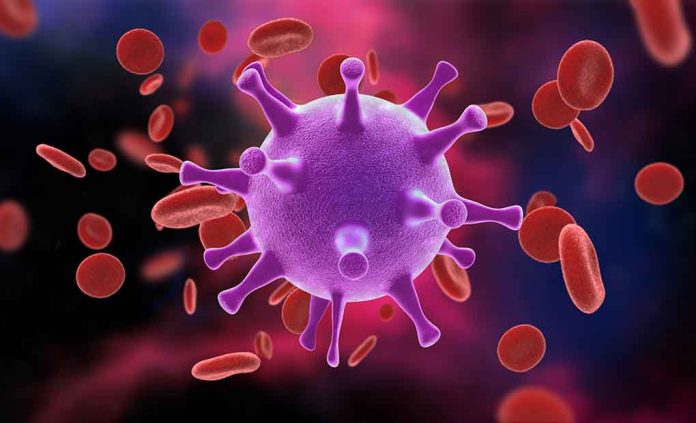
Cambodia’s fifth H5N1 bird flu death signals a dangerous resurgence of the virus that’s now claimed multiple lives, with health officials scrambling to contain what could become a wider threat.
Key Takeaways
- Cambodia has reported seven H5N1 avian flu cases this year, resulting in five deaths, with contact with infected poultry being the primary transmission route.
- The latest victims include a 52-year-old man from Svay Rieng province and a critically ill 41-year-old woman from Siem Reap province.
- Health officials suspect a novel reassortment of H5N1 clades may be responsible for the recent surge in cases.
- The US Department of Agriculture is considering implementing a poultry vaccination program, despite logistical challenges that could impede effectiveness.
- Bird flu is simultaneously affecting wildlife in the US, with recent H5N1 detections in mammals including rabbits and foxes.
Deadly Resurgence in Cambodia
Cambodia’s battle against the deadly H5N1 avian influenza has intensified with the country reporting its fifth death from the virus. The latest victim, a 52-year-old man from Prasat village in Svay Rieng province, contracted the infection after handling sick and dead poultry. His symptoms followed the typical progression of bird flu infection, including fever, cough, and severe respiratory distress that ultimately proved fatal. This death marks a disturbing trend in the resurgence of a virus that has previously shown potential for causing widespread human outbreaks.
“Last week, Cambodia announced its sixth case of bird flu,” reported Cambodia’s Ministry of Health.
The country’s death toll now includes three children and two adult males, while an adult woman was previously infected but managed to recover. Most concerning is the recent announcement of a seventh case—a 41-year-old woman from Siem Reap province now in critical condition. Like other victims, her infection has been linked to exposure to sick and dead poultry in her vicinity, reinforcing the primary transmission route of this virus from animals to humans. This cluster of cases represents the most significant outbreak of H5N1 in Cambodia in recent years.
Evolving Viral Threat
Health authorities have yet to confirm the specific strain responsible for the latest infections, though the previously dominant clade 2.3.2.1c is suspected. More alarming is the possibility that recent cases may involve a novel reassortment of H5N1 clades, potentially making the virus more transmissible or virulent. Simultaneously, Cambodia has detected cases of another avian influenza strain, H9N2, adding to the complexity of the epidemiological situation. These developments highlight the constant evolution of avian influenza viruses and their persistent threat to public health.
“Cambodia has reported another human H5N1 avian flu case, the second in a week,” according to a health ministry Facebook post translated and posted by Avian Flu Diary, an infectious disease news blog.
The current surge in Cambodia occurs against the backdrop of global concerns about avian influenza. The virus has shown an increasing ability to infect various mammalian species, raising fears about mutations that could enhance human-to-human transmission. While current cases appear to be primarily linked to direct contact with infected poultry, health officials remain vigilant for any signs of sustained human transmission, which would represent a significant escalation of the threat.
US Response and Vaccination Challenges
In response to the global spread of H5N1, the US Department of Agriculture is considering an unprecedented step: vaccinating poultry against avian influenza. This potential policy shift comes with significant complications, including possible impacts on poultry exports and international trade relations. The logistical challenges of implementing mass vaccination across America’s vast poultry industry are daunting, raising questions about the program’s feasibility and effectiveness in preventing viral transmission.
“The US Department of Agriculture is considering, for the first time, a plan to vaccinate poultry against avian flu,” Reuters reported late last week.
Meanwhile, the USDA’s Animal and Plant Health Inspection Service (APHIS) has confirmed more H5N1 avian flu detections in American wildlife, including mammals like desert cottontail rabbits and red foxes, as well as wild birds such as grackles and pigeons. These findings demonstrate the virus’s expanding ecological footprint and ability to cross species barriers. President Trump’s administration is monitoring these developments closely, recognizing that preventing a potential pandemic requires a coordinated approach to animal and human health surveillance.
Preventive Measures and Future Outlook
The increasing number of H5N1 cases in Cambodia underscores the urgent need for enhanced surveillance, rapid response protocols, and public education about the risks of handling sick or dead poultry. Health authorities are implementing contact tracing and monitoring for all identified cases, though the rural nature of many infections complicates these efforts. Community engagement remains critical in identifying potential cases early and preventing further spread through the proper handling and disposal of infected birds.
The threat posed by avian influenza extends beyond immediate human cases. The virus’s ability to reassort and adapt to new hosts presents a long-term challenge for global health security. As President Trump has repeatedly emphasized, strengthening America’s biosecurity and pandemic preparedness must remain a priority. The Cambodian outbreak serves as a reminder that emerging infectious diseases require constant vigilance and robust international cooperation to prevent localized outbreaks from evolving into global health emergencies.













